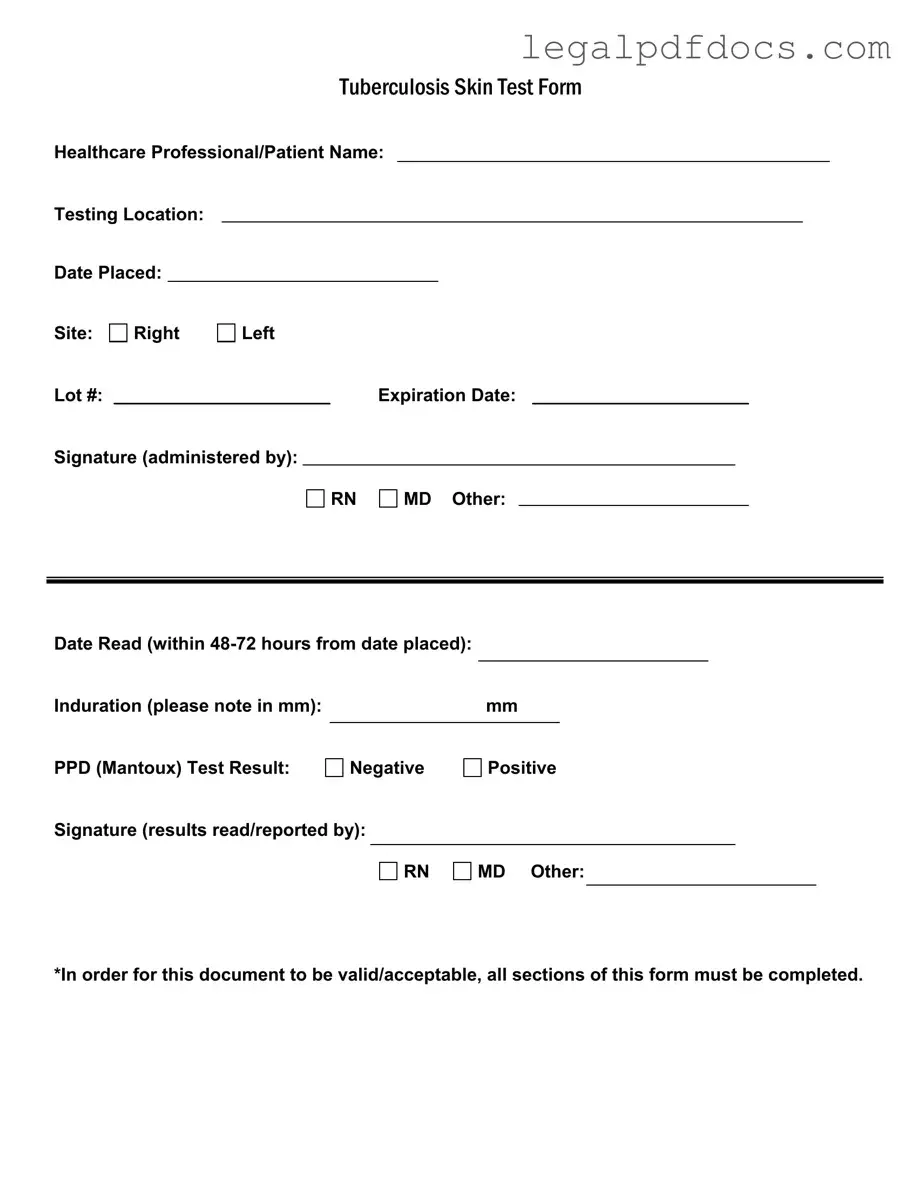The Tuberculosis (TB) Skin Test form is an essential document used in the assessment of TB exposure and infection. This form captures critical information related to the testing process, including the names of both the healthcare professional and the patient, as well as the location where the test was administered. It also records the date the test was placed and the specific site on the body where the test was conducted, indicating whether it was on the right or left arm. Each test is assigned a unique lot number, along with an expiration date to ensure the validity of the test materials used. The signature of the administering professional—be it a registered nurse (RN), medical doctor (MD), or another qualified individual—confirms the test's administration. After a specified period of 48 to 72 hours, the results are read, and the induration, or swelling, is measured in millimeters (mm), which is crucial for determining the outcome. The form concludes with the test result, indicating whether the PPD (Purified Protein Derivative) test is negative or positive, and requires the signature of the professional who reported the results. To maintain its validity, it is imperative that all sections of this form are thoroughly completed.
